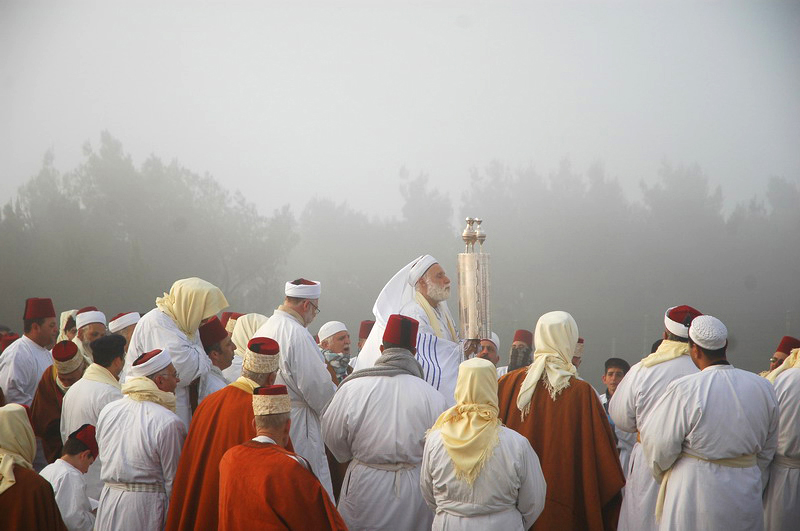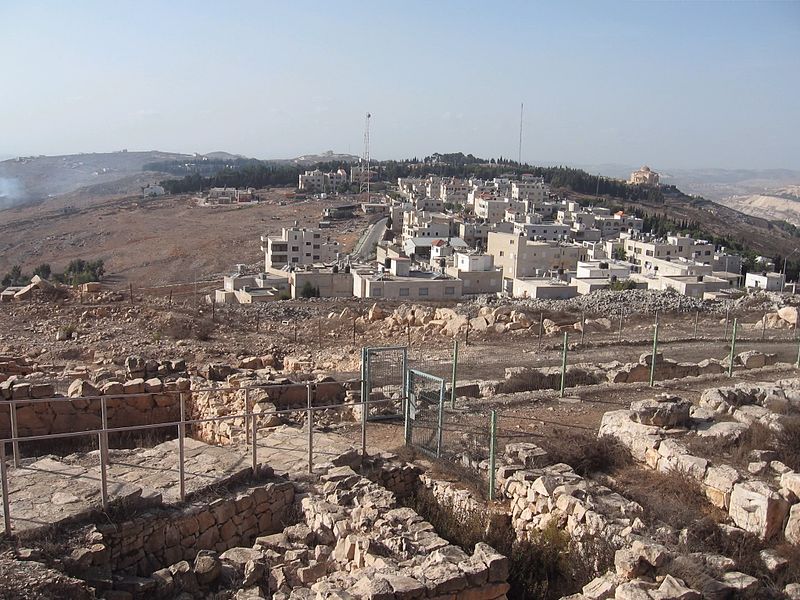Mk 1:14 After John is arrested by Herod Antipas (in 27AD), Jesus goes north to Galilee (meaning ‘the circle’ – an apt name for the roughly circular lake and the surrounding hills). The Hebrew name for the lake, Yam Kinneret, means a ‘harp’ – again describing the shape of the lake. The lake is quite small – roughly 13 miles / 21km long by 7 miles / 11km wide and lies in the Jordan Valley about 650 feet / 200 metres below sea level.
Jn 4:1-6 En route to Galilee, Jesus stops at Sychar on the south east slope of Mount Ebal in Samaria (see 3 on Map 6). Here he talks with a Samaritan woman at Jacob’s Well – a well dug by the Jewish patriarch Jacob on land he purchased near Shechem and gave to Joseph (see Genesis 33:18-19 & 48:21-22). Jacob’s Well was typical of the deep wells at numerous settlements in this area. The Samarian Hills are limestone – a permeable rock that allows water to percolate down through the cracks. Consequently, there is little surface water and deep wells are dug to reach the water stored underground.
Samaria
Jesus took the direct route north from Jerusalem to Galilee through Samaria, in contrast to most Jews who took the longer, indirect route east of the River Jordan through Peraea because of their hatred for the Samaritans (see Map 6). The Samaritans were descendants of the Israelites of the northern kingdom who had intermarried with foreign settlers after the fall of Samaria (the capital of the northern kingdom of Israel) in 722 BC.
As a result of this racial intermarriage, they were no longer considered to be truly Jewish and were hated by most Jews. The Samaritans continued to worship as the Jews did, but took only the first five books of the Old Testament as their spiritual authority. They built a ‘rival’ temple on Mount Gerizim – which they believed to be the site of the altar where Abraham prepared to offer his son Isaac as a sacrifice (see Genesis 22:1-14) – but this was destroyed by the Hasmonean king John Hyrcanus in 128 BC.
At the time of Jesus’s encounter with the Samaritan woman, Mount Gerizim was still a holy place, and even today, the Samaritan community offers lambs as a ritual sacrifice on the slopes of Mount Gerizim at Passover time.

Samaritans marking Passover on Mount Gerizim (Edward Kaprov)
The site of Jacob’s Well, on the eastern side of Nablus, is now part of a Greek Orthodox monastery. The monastery was built in the 1860s on the site of a late 4th century Byzantine church, which was itself succeeded by a Crusader church. Today, visitors can enter the modern church built in 2007 around what is believed to be the original well, restored by the Crusaders in the twelth century.
Jesus offers ‘living water’
Jn 4:7-15 The Samaritan woman asks Jesus how he – a Jew – has the nerve to ask her – a despised Samaritan – to draw some water from the well. In exchange for a drink, Jesus offers to give her ‘living water’ – the indwelling power of the Holy Spirit that will give her eternal life. Whoever “drinks the water I give will never be thirsty,” he says (John 4:14). Water is vital for life but is difficult to obtain in the limestone hills around Sychar. Instead, Jesus promises her “a spring of water flowing up inside … giving eternal life” (John 4:14). Springs rarely run dry, so Jesus’s offer is to give her the life-giving ‘water’ of the Holy Spirit that will never run out (see John 7:37-39).
Jn 4:16-26 When Jesus displays a miraculous knowledge of her marital affairs, she realises he is a prophet. She points out that her ancestors worshipped in the Temple on Mt Gerizim while the Jews worship in the Temple at Jerusalem. Jesus tells her that a time is coming soon when true worshippers will not be restricted to worshipping in any one place as they will worship anywhere “in spirit and truth” (John 4:23). The woman says the promised Messiah – the Christ – will explain everything when he comes. Jesus replies, “I am he” (John 4:26) (see the feature on Who was the Messiah? in Section 2).

Remains of the Samaritan Temple on Mount Gerizim (Daniel)
Jn 4:27-42 When Jesus’s disciples return from the village, they are surprised to find him speaking to a Samaritan, especially a woman! The woman leaves her heavy water jar and rushes back into town telling everyone about her encounter with Jesus. As a result, people flock to hear Jesus and many believe his message of repentance and forgiveness. They urge him to stay, so he teaches here for two days.
